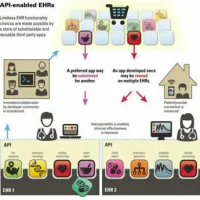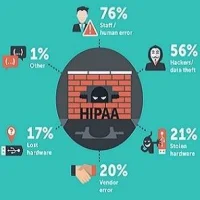Hackensack
University Medical Center recently unveiled the interoperability between its electronic
health records EpicEHR and automated dispensing cabinets (ADCs) from Omnicell. They
believe that EHR-ADC link could eliminate redundancies during the ordering
process and can help reduce medicine errors at the point-of-care.
With the Epic-Omnicell link at Hackensack, nurses are better able to interface with the complete medication management system within one application. When the healthcare provider opens up the patient’s chart, they can schedule the medications and view whether the medicine has been delivered to the pharmacy or not. There is no need for a separate login and there is also no need to remember passwords. They system is connected to the EHR and directly opens up the chart. This system avoids the unnecessary task of going back to the cabinet and checking if the medication has been delivered or not.
"If the medication is not delivered the medication is grayed out and the nurse will be unable to remove it," said Nilesh Desai, director of pharmacy at HackensackUMC. "As soon as a pharmacy technician delivers a medication, it lights up. As a nurse, you don't have to go to the cabinet to find out if the medication has been delivered. A nurse can do it directly from a computer from anywhere in the nursing unit. It saves quite a few steps and time."
Another important benefit of the interoperability between EHRs and ADCs as highlighted by Shafiq Rab, MD, vice president and chief information officer at HackensackUMC, is that system can also check for allergies, drug-to-drug interaction, and drug-to-food interaction.
According to a benefit analysis extrapolated from a 2013 white paper prepared by Cerner, "The Clinical Benefits of CareAware Enhanced Dispensing," nurses at Penn State Milton Hershey Medical Center were spending on average of 8.5 minutes on a single patient's medication pass before the interoperability between EHRs and ADCs. This highlights the inefficiency that can result if such a system is not in place. After implementation of EHR-ADC link, there was a 32 percent improvement in the same task. Thus, the paper concludes that the implementation of the interoperability between EHR and ADC can allow clinical information to be shared seamlessly and can help improve the workflow and patient safety.
In addition, the interoperability can be extended to the entire, end-to-end, medication-management process. The ADCs can be connected with enterprise-wide pharmaceutical resource inventory management system, to IV prep check systems and to microbial surveillance systems. This can significantly increase the optimisation of the management of medication processes and resources. In addition, it can enhance patient safety and clinical workflow and help reduce errors and enable healthcare providers to have access to the right information, through the right application, in the right place, at the right time.
Source: Healthcare IT News
Image Credit: Pixabay










